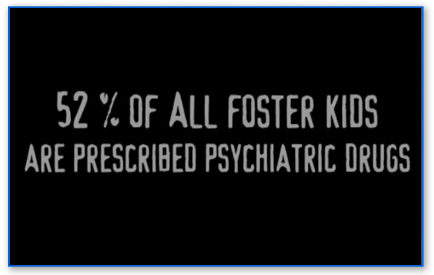
Across Canada, federal prisons have routinely prescribed psychotropic drugs, and in particular quetiapine, to women prisoners. Women prisoners, friends and families, and advocates have long complained that the women’s prisons are a factory for zombie production, that women go in with some problems and come out stone cold zombie. They were right.
Howard Sapers, the Correctional Investigator of Canada, has been on the case since last year, when he was informed, by the Canadian Press and CBC, that the Correctional Service Canada had told them that, basically, it didn’t have data on prison prescriptions. It had general information but nothing specific.
The conditions in women’s prisons are specific.
Sapers found that, of 591 federal women prisoners, 370 are on psychotropic drugs, prescribed by the prison staff. 63% of women prisoners are on heavy medication, with dangerous side effects. The more local, the more vicious are the numbers. For example, in the Nova Institution for Women in Nova Scotia, the Joliette Institution for Women in Quebec and the Fraser Valley Institution for Women in British Columbia, the prescription rate is around 75%. Three out of every four women is being given drugs. By contrast, in 2001, the prescription rate was around 42%.
Why are so many women on quetiapine? Not to schizophrenia or bipolar disorder, which is what quetiapine is meant for. No. In Canada’s federal prison system, quetiapine is the go-to drug for any sleeping discomfort, for women, that is. Further, many of the women prisoners are given multiple psychotropic drugs.
There’s a special fate in store for women prisoners: “Women are prescribed more psychotropic medications than men, both in the community and in prison. Prescribing psychotropic medication in the prison setting is particularly problematic given the hierarchical relationship between psy and correctional mandates – where psy care is executed through a correctional system that inherently prioritizes security and carceral power over therapeutic care. Due to the fact that provincial and federal correctional systems are responsible for providing mental health care to prisoners a power imbalance exists between psy and medical experts and the correctional administrators to whom they are accountable and the prisoner-patients. It is important to remember that a prisoner’s ability to refuse medication is not always guaranteed; medication orders are often written into the prisoner’s correctional plan and thus become compulsory.”
For Aboriginal women prisoners, it’s worse. For women in provincial prisons, it’s worse. For all women prisoners, however, the prison produces a mass population of women “walking zombies.”
Current and former women prisoners report now what they reported three years ago. They were given drugs, without explanation. They received little to no real counseling. They couldn’t say no. They were prisoners, after all, and they were women prisoners. If the state wants women to become walking zombies, so be it.
(Image Credit: https://thenonconformer.wordpress.com)
